Wall Street chases crypto, and Ethereum ushers in a highlight moment
AUTHOR: MONK
Compiler: Deep Tide TechFlow
The transaction symbol is $ETH.
Wall Street is experiencing a crypto highlight moment.
Traditional finance (TradFi) is draining the resources of the growth narrative. Artificial intelligence has become a hot topic in the market, but the focus on it has been overblown, and software companies are nowhere near as attractive today as they were in the 2000s and 2010s.
At a deeper level, growth investors who have raised capital to invest in innovation stories and massive serviceable markets (TAMs) know that most AI-related companies are at ridiculous premiums, and that other so-called "growth" narratives are no longer easy to find. The once-highly regarded FAANG stock is also gradually transforming into a compound asset with "good quality, maximum profits, and medium annual growth".
For example, the median EV/Rev multiple for software companies has fallen below 2.0x.
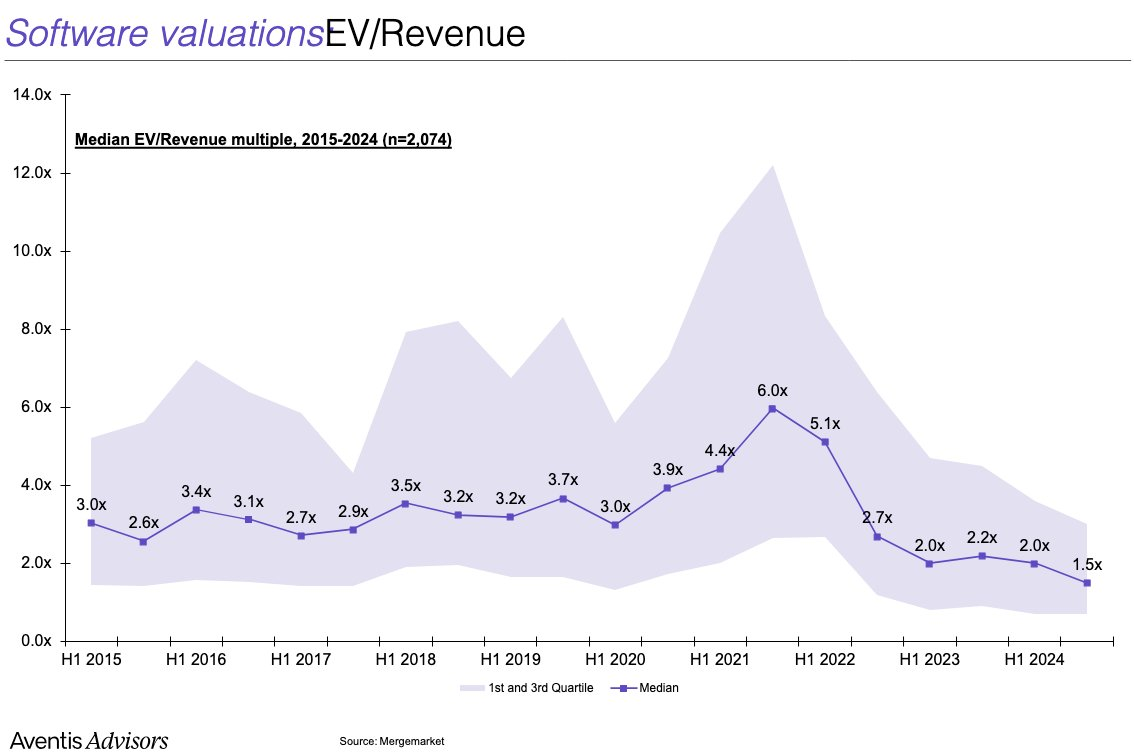
That's when cryptocurrencies came into the air.
Bitcoin ($BTC) broke all-time highs, the US president heavily promoted our assets at a press conference, and a wave of regulatory tailwinds pushed the crypto asset class back into the spotlight for the first time since 2021.
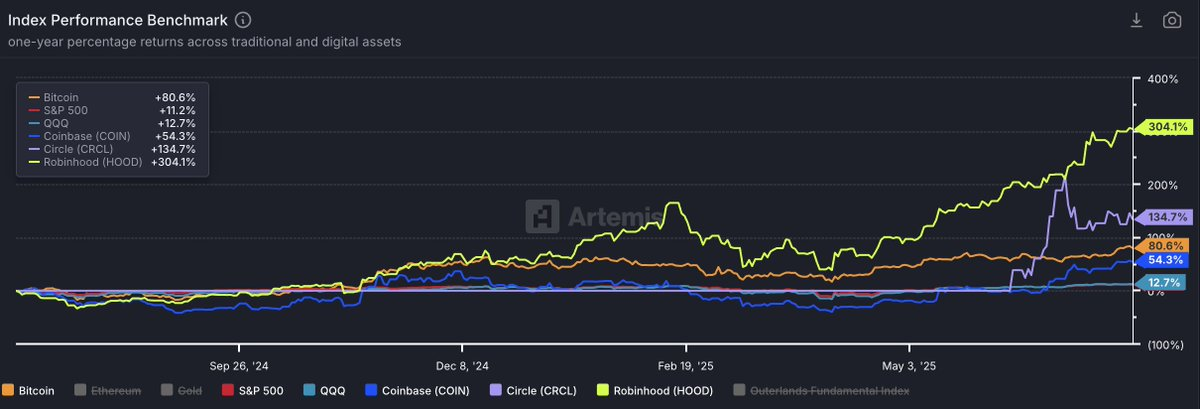
BTC, COIN, HOOD, CIRCLE vs. SPY and QQQ (Source: Artemis)
This time, the protagonists are no longer NFTs and Dogecoin. This time, it's the era of digital gold, stablecoins, "tokenization" and payment reform. Stripe and Robinhood are claiming that cryptocurrencies will be a core focus for their next round of growth; $COIN (Coinbase) successfully joined the S&P 500 index; Circle shows the world that cryptocurrencies are attractive enough that growth stocks can once again ignore yield multiples.
But how does it all relate to $ETH?
For those of us crypto natives, the space for smart contract platforms looks very fragmented. There's Solana, there's Hyperliquid, and a dozen emerging high-performance blockchains and Rollups (on-chain scaling solutions).
We know that Ethereum's lead has been truly challenged, and it is facing an existential threat. We also know that it doesn't solve the problem of value capture.
But I very much doubt that Wall Street understands any of this. In fact, I would even venture to say that most Wall Street investors know almost nothing about Solana. If we're honest, XRP, Litecoin, Chainlink, Cardano, and Dogecoin may be more well-known in the outside market than $SOL. After all, these people have been indifferent to the entire crypto asset class for several years.
What Wall Street knows is that $ETH is the epitome of the "Lindy effect" (referring to things that have been around for a long time are more likely to continue to exist), which has been battle-tested and has been the primary "beta investment option" for $BTC for years. What Wall Street sees is that $ETH is the only other crypto asset that has a liquid ETF. Wall Street is keen on the upcoming catalyst versus classic relative value investing.
Those investors in suits may not know much about cryptocurrency, but they know that Coinbase, Kraken, and now Robinhood have all decided to "build on Ethereum." With minimal due diligence, they can discover that the Ethereum chain has the largest pool of stablecoins. They would start calculating the "math of the moon landing" and soon realize that while $BTC had reached a new all-time high, $ETH was still more than 30% below its 2021 high.
You may think that relative underperformance looks pessimistic, but these people have different ways of investing. They prefer to buy lower-priced but well-targeted assets than to chase higher assets that make them question whether they have "missed the opportunity".
I think they've come. Investment authorization is not an issue, and any fund can drive cryptocurrency exposure with the right incentives. Although Crypto Twitter (CT) has declared that it will not run into $ETH again for more than a year, the ticker has continued to perform well over the past month.
As of this year, $SOLETH is down nearly 9%. Ethereum's market dominance bottomed out in May and has since recorded its longest upward trend since mid-2023.
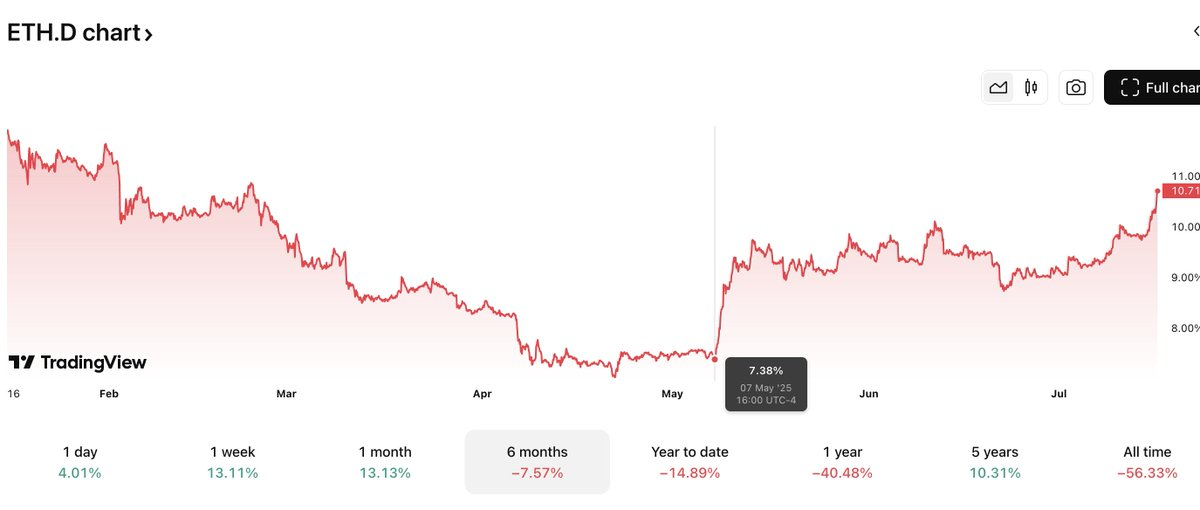
If the entire crypto Twitter (CT) tags $ETH as a "cursed coin", why does it still outperform?
The answer is: it's attracting new buyers.
Since March this year, the inflow of spot ETF funds has been showing a one-way growth trend.
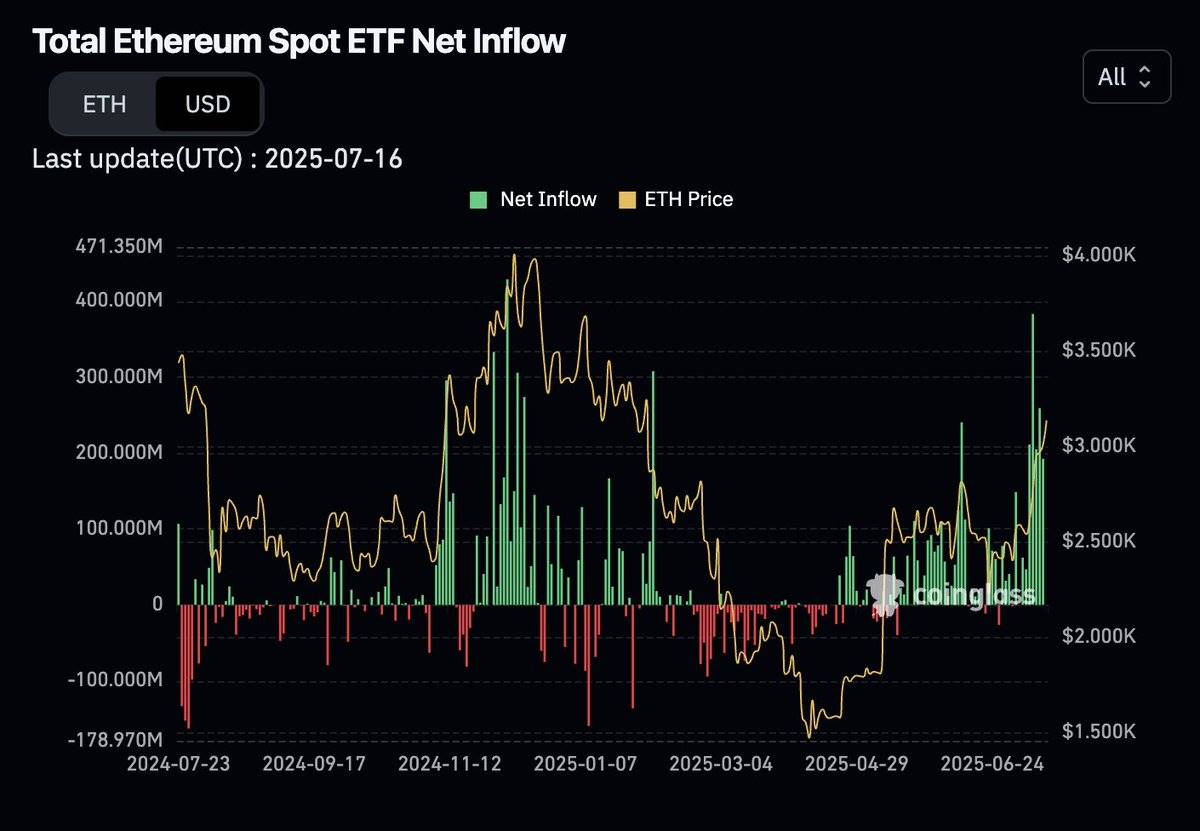
Source: Coinglass
Microstrategy Clones, similar to $ETH, are adding aggressive positions to the market, adding early structural leverage to the market.
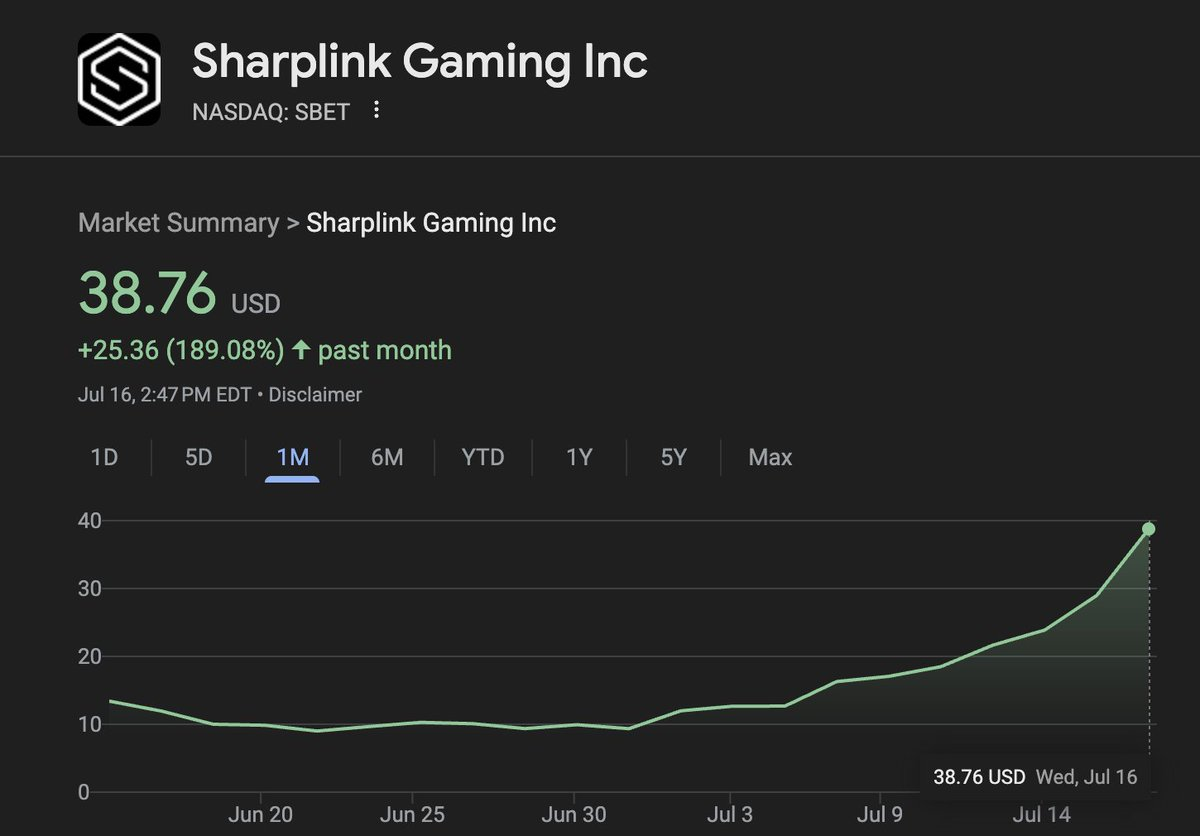
Perhaps, some crypto natives realize that they have insufficient exposure to $ETH and begin to recalibrate their positions, possibly exiting from the $BTC and $SOL that have outperformed over the past two years in favor of Ethereum.
I'm not saying that Ethereum has solved the problems it has. I think what's likely to happen at this stage is that $ETH as an asset starts to decouple from the Ethereum network itself.
Outside buyers are driving a paradigm shift in $ETH assets, challenging our preconceived notions that it will only fall. Bears will eventually be forced to close their positions. After that, crypto native capital will start chasing the rally until some kind of full-blown speculative frenzy for $ETH emerges and ends with a spectacular top.
If all this happens, then the all-time high (ATH) is not too far away.
